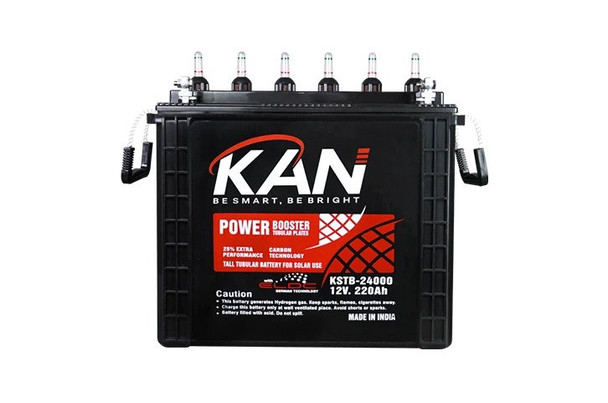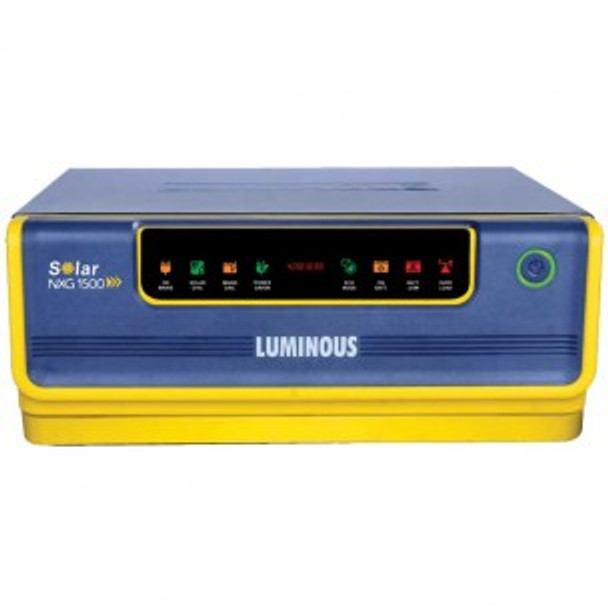Green Energy Solutions for Industrial Facilities: ROI and Implementation Strategies
Key Takeaways:
- Understanding the various green energy solutions available for industrial facilities
- Calculating the ROI of green energy implementations
- Step-by-step strategies for implementing sustainable energy practices
- Overcoming common challenges in green energy adoption
- Case studies of successful industrial green energy projects
Introduction
In today's rapidly evolving industrial landscape, the adoption of green energy solutions has become more than just a trend, it's a necessity. As industries face increasing pressure to reduce their carbon footprint and operational costs, the implementation of sustainable energy practices has emerged as a pivotal strategy.
This article entails green energy solutions for industrial facilities, exploring the return on investment (ROI) and effective implementation strategies that can revolutionize your operations.
SOLAR PANEL 250WATTS 24V POLY
The Green Energy Revolution in Industry
The industrial sector is one of the largest consumers of energy worldwide. According to the International Energy Agency, industry accounts for 37% of global energy use and 24% of global CO2 emissions. This significant impact presents both a challenge and an opportunity for industrial facilities to lead the charge in sustainable practices.
Green energy solutions offer a pathway to reduce this environmental impact while also providing substantial economic benefits. From solar panels and wind turbines to energy-efficient machinery and smart grid technologies, the options for industrial facilities are diverse and increasingly accessible.
Understanding ROI in Green Energy Investments
When considering green energy solutions, one of the primary concerns for industrial facility managers is the return on investment. While the initial costs of implementing green energy solutions can be substantial, the long-term benefits often outweigh these upfront expenses.
Factors Influencing ROI:
- Energy Cost Savings: The most direct benefit of green energy solutions is the reduction in energy costs. Solar panels, for instance, can significantly decrease reliance on grid electricity.
- Government Incentives: Many governments offer tax breaks, grants, or other financial incentives for industries adopting green energy solutions.
- Increased Operational Efficiency: Energy-efficient equipment often leads to improved operational efficiency, reducing not just energy costs but overall production costs.
- Enhanced Brand Image: Adopting green practices can improve a company's reputation, potentially leading to increased business opportunities.
- Reduced Maintenance Costs: Many green energy solutions require less maintenance than traditional energy systems, leading to long-term cost savings.
Calculating ROI
To calculate the ROI of green energy solutions, use the following formula:
ROI = (Net Profit / Cost of Investment) x 100
For green energy investments, consider:
- Net Profit = Total Savings (Energy costs + Incentives + Efficiency gains) - Total Costs (Installation + Maintenance)
- Cost of Investment = Initial installation and equipment costs
For example, if a solar panel system costs ₦50,000,000 to install and saves ₦10,000,000 annually in energy costs, the ROI after 5 years would be:
ROI = ((₦10,000,000 x 5) - ₦50,000,000) / ₦50,000,000 x 100 = 100%
This indicates that the investment would be fully recovered in 5 years, with additional savings thereafter.
Kan 12v. 220AH Solar Tubular Battery
Implementation Strategies for Green Energy Solutions
Implementing green energy solutions in industrial facilities requires careful planning and execution. Here's a step-by-step guide to help you navigate this process:
- Conduct an Energy Audit: Before implementing any solutions, it's crucial to understand your current energy consumption patterns. An energy audit will help identify areas of high energy use and potential inefficiencies.
- Set Clear Goals: Establish specific, measurable objectives for your green energy initiative. This might include targets for energy reduction, cost savings, or carbon emission cuts.
- Explore Available Options: Research various green energy solutions that align with your facility's needs and goals. This might include:
- Solar panels
- Wind turbines
- Biomass energy systems
- Energy-efficient lighting and HVAC systems
- Smart energy management systems
- Assess Feasibility and ROI: Conduct a thorough analysis of each potential solution, considering factors like initial costs, expected savings, and ROI timeframe.
- Secure Funding: Explore financing options, including government grants, loans, or energy performance contracts.
- Develop an Implementation Plan: Create a detailed plan outlining the steps for installation, integration with existing systems, and any necessary staff training.
- Execute the Plan: Implement your chosen solutions, ensuring minimal disruption to your operations.
- Monitor and Optimize: Continuously track the performance of your green energy solutions and make adjustments as needed to maximize efficiency and ROI.
Overcoming Implementation Challenges
While the benefits of green energy solutions are clear, implementation can come with its share of challenges. Here are some common hurdles and strategies to overcome them:
- High Initial Costs: Explore phased implementation or start with solutions that offer the quickest ROI.
- Technical Complexity: Partner with experienced providers or consider hiring a sustainability expert to manage the transition.
- Resistance to Change: Educate staff about the benefits of green energy and involve them in the planning process to gain buy-in.
- Integration with Existing Systems: Work with providers who offer customized solutions that can seamlessly integrate with your current infrastructure.
- Regulatory Compliance: Stay informed about local and national energy regulations and ensure your chosen solutions meet all necessary standards.
Inverter 1.5 KVA/24V Solar Luminous
Success Stories in Industrial Green Energy
1: Solar Power Revolution in Manufacturing
A large manufacturing plant in Lagos implemented a comprehensive solar power system, covering 70% of its roof space with high-efficiency solar panels. The result was a 40% reduction in annual energy costs and a carbon emission reduction equivalent to taking 500 cars off the road each year. The initial investment of ₦200 million was recovered in just 4 years, with ongoing savings projected for the next 20+ years.
2: Wind Energy for Chemical Processing
A chemical processing facility in Kano installed three large wind turbines to supplement its energy needs. This initiative not only reduced the facility's reliance on the unstable national grid but also led to a 30% reduction in energy costs. The project had an initial cost of ₦500 million but is expected to generate savings of over ₦1.5 billion over its 25-year lifespan.
Frequently asked Questions
1. What is the average payback period for industrial green energy solutions?
The payback period varies depending on the specific solution and scale of implementation. However, many industrial facilities see a return on investment within 3-7 years for solutions like solar panels and energy-efficient equipment.
2. Are there government incentives available for industrial green energy adoption in Nigeria?
Yes, the Nigerian government offers various incentives, including tax breaks and grants, for industries adopting renewable energy solutions. It's advisable to check with the Nigerian Investment Promotion Commission (NIPC) for the most current information.
3. How can small to medium-sized enterprises (SMEs) afford green energy solutions?
SMEs can explore options like energy performance contracts, where the upfront costs are covered by the energy savings. Additionally, starting with smaller-scale solutions or focusing on energy efficiency measures can make green energy more accessible.
4. What are the most cost-effective green energy solutions for industrial facilities?
Energy-efficient lighting, smart energy management systems, and solar water heating are often among the most cost-effective solutions with quick ROI. However, the best option depends on your specific facility and energy needs.
5. How does green energy adoption impact a company's corporate social responsibility (CSR) profile?
Adopting green energy solutions significantly enhances a company's CSR profile by demonstrating commitment to environmental sustainability. This can lead to improved brand image, customer loyalty, and potentially new business opportunities.
Related Content
- The Best Solar Panels and Inverters for 2025: Sustainable Energy Solutions in Nigeria
- Top 5 Best Water Treatment Systems for Industries in 2025: Clean Water Solutions for Nigeria
- The Best HVAC Systems of 2025: Climate Control Solutions for Nigerian Businesses
- Best Eco-Friendly Industrial Supplies for 2025: Sustainable Options for Nigerian Businesses
Conclusion
The adoption of green energy solutions in industrial facilities is not just an environmental imperative but a smart business decision. With careful planning, strategic implementation, and a focus on ROI, industries can significantly reduce their energy costs and environmental impact while positioning themselves as leaders in sustainability.
As you consider embarking on your green energy journey, remember that expert guidance can make all the difference. GZ Industrial Supplies Nigeria is at the forefront of providing cutting-edge green energy solutions tailored for industrial applications. Our team of experts can help you navigate the complexities of green energy adoption, ensuring you maximize your ROI while minimizing disruption to your operations.
Ready to transform your industrial facility with green energy solutions? Contact GZ Industrial Supplies Nigeria today at sales@gz-supplies.com or visit our website at GZ Industrial Supplies to learn more about our sustainable energy offerings and how we can help you achieve your green energy goals.
Recent Posts
-
Top 10 Practical Uses of Teepol: From Industrial Cleaning to Everyday Household Tasks
Key Takeaway Teepol is not just a cleaning and maintenance chemical, it’s a multi-purpose powe …Mar 28, 2025 -
What is Teepol? Everything You Need to Know About Epochem Multipurpose Detergent
Key Takeaway Epochem Teepol Multipurpose Detergent is the ultimate all-in-one cleaning solution for …Mar 27, 2025 -
Oil-Lubricated vs Oil-Free Air Compressors: What’s the Difference?
Key takeaway Oil-lubricated compressors are built for heavy-duty, continuous operations, offering du …Mar 26, 2025









